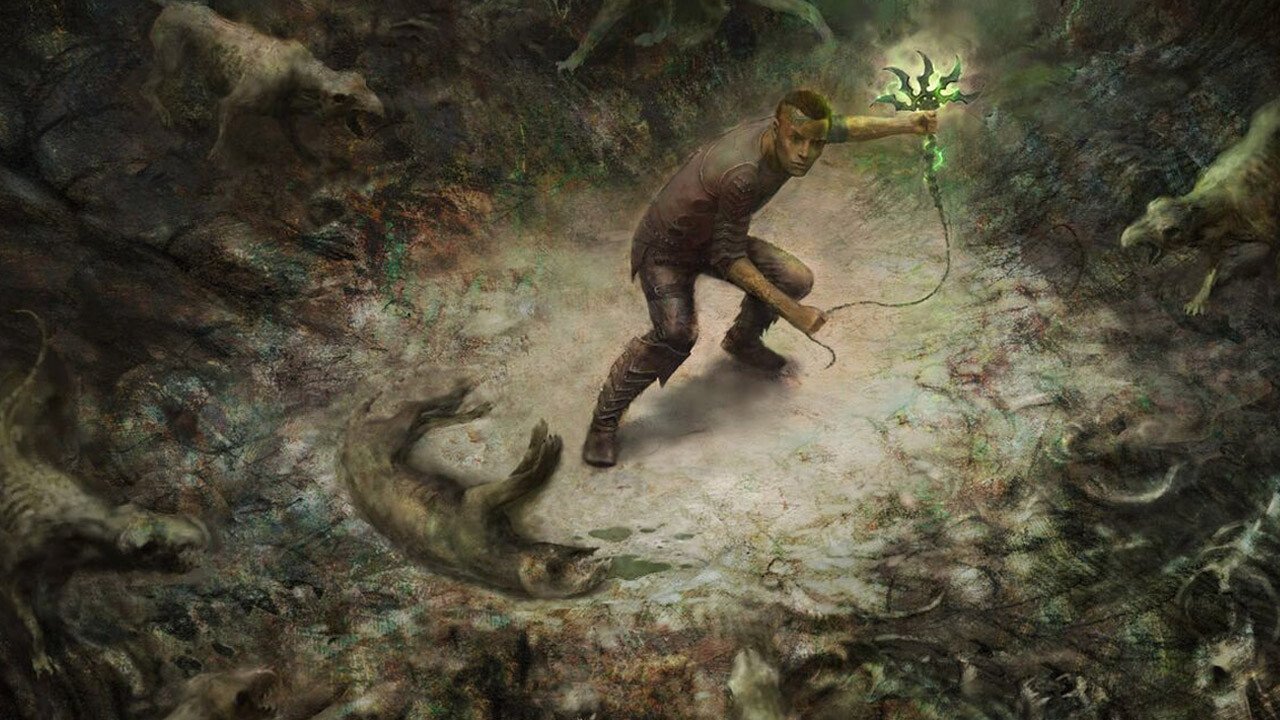Early Access is a fantastic thing for both players and independent or small developers—it keeps players invested (quite literally in the case of crowdfunding) in the game’s development, and gives them direct input into the game’s direction. In reality, it’s pretty much free QA testing for the company, but we love it anyway.
Torment: Tides of Numenera has a strong set of reputations behind it. It’s the spiritual successor to Planescape: Torment, considered one of the best RPGs in videogames, made by a company composed of those who worked on the original. It’s set in the Numenera universe, made by pen-and-paper legend Monte Cook, an extremely-far-future Earth where people live in the remnants of dozens of nigh-magical technological empires. It’s a tremendously successful Kickstarter for that reason (as Numenera itself was).

Personally, I adore Planescape: Torment and consider it a testament to the importance of writing in videogames. I’m also a fan of Numenera, so this game baits my excitement as well. It also sets an incredibly high bar—Planescape: Torment still stands up today, thanks to its superb writing, and I can’t help but expect a game that seeks to recreate that will live up to that hype.
The game is, of course, unfinished, and laden with bugs and errors that disrupt gameplay. Early Access games get a pass for this, as we’re playing an unfinished game. What is there, however, is a solid RPG that focuses more on narrative and problem-solving than on combat and grinding.
Tides of Numenera begins with your protagonist awaking in free-fall high above the Earth, plummeting downward towards a crystal structure. Voiced narration reads out the text below, as a blur shoots by on the screen—starting things off high-stress. Immediately, you have options as to how you access your surrounds, despite the sheer helplessness of your situation—arrest your fall, speed your descent to face the inevitable, or try to remember what led you to this point. It certainly sets the tone for this adventure, and is a promising start.
It captures the Numenera universe well. Advanced technology litters the landscape around the crystal dome you (too) quickly descend to, ranging from ancient computer systems to laughing cones orbiting each other. Old, shattered platforms linked by bridges of light, and ancient, alien monsters trapped in cages dot the landscape of the beach and town you start nearby. It skirts that line with the Other—technology is recognizable as such, and then does something bizarre like smugly ignore your attempts to puzzle out its command line (making very clear it’s messing with you), with bio-mechanical monsters whose purpose is inscrutable (like the Vorlon analogy that comments inscrutably on your presence). There’s a line between understanding and confusion that the esoteric phenomena show. The 2D backgrounds have a painted, washed look that’s appealing, and actually mixes well with the 3D models.
What’s striking, though, is how much fidelity they’ve exhibited for the Numenera roleplaying system. Your characters classes—the warrior Glaive, the thief Jack, and the mage Nano, as well as the descriptive prefixes (chosen through the game’s prologue). Your three core stats—Might, Speed, and Intelligence—serve as both a resource to assist in actions and as health. Combat (or ‘Crises’, as situations always have other solutions), restored by brief rests. They even have the cyphers, ancient bits of technology that amount to one-shot magical items. On paper, the Numenera system works quite well, and my experiences with it in video game form were promising, if slow. Combat felt somewhat sluggish, even by turn-based standards, and I would like to see that refined and sped up to get to the best part, the written story.
The dialogue system is promising—options reference your character backstory and knowledge, giving you new options and allow you to solve problems different ways. Different solutions influence your Tides, ethical systems that respond to your actions and have a tangible presence in the game. The writing’s as expected—top-notch, introspective, and digestible. The Last Castoff’s companions, both of the starting ones, are intriguing, unique beings, such as an educated scientist overlayed with ghostly images of her alternate reality selves. I look forward to seeing further companions on the level of Daakon and Fall-from-Grace of Planescape: Torment fame.
Early access can’t be treated as a final game, and this is not a final review. It can only be promising or disappointing, and I think that Tides is the former—it hits all the notes it was hyped up to be. I am looking forward to exploring it further and to seeing the finished product.




